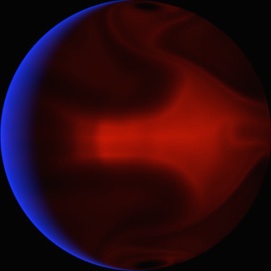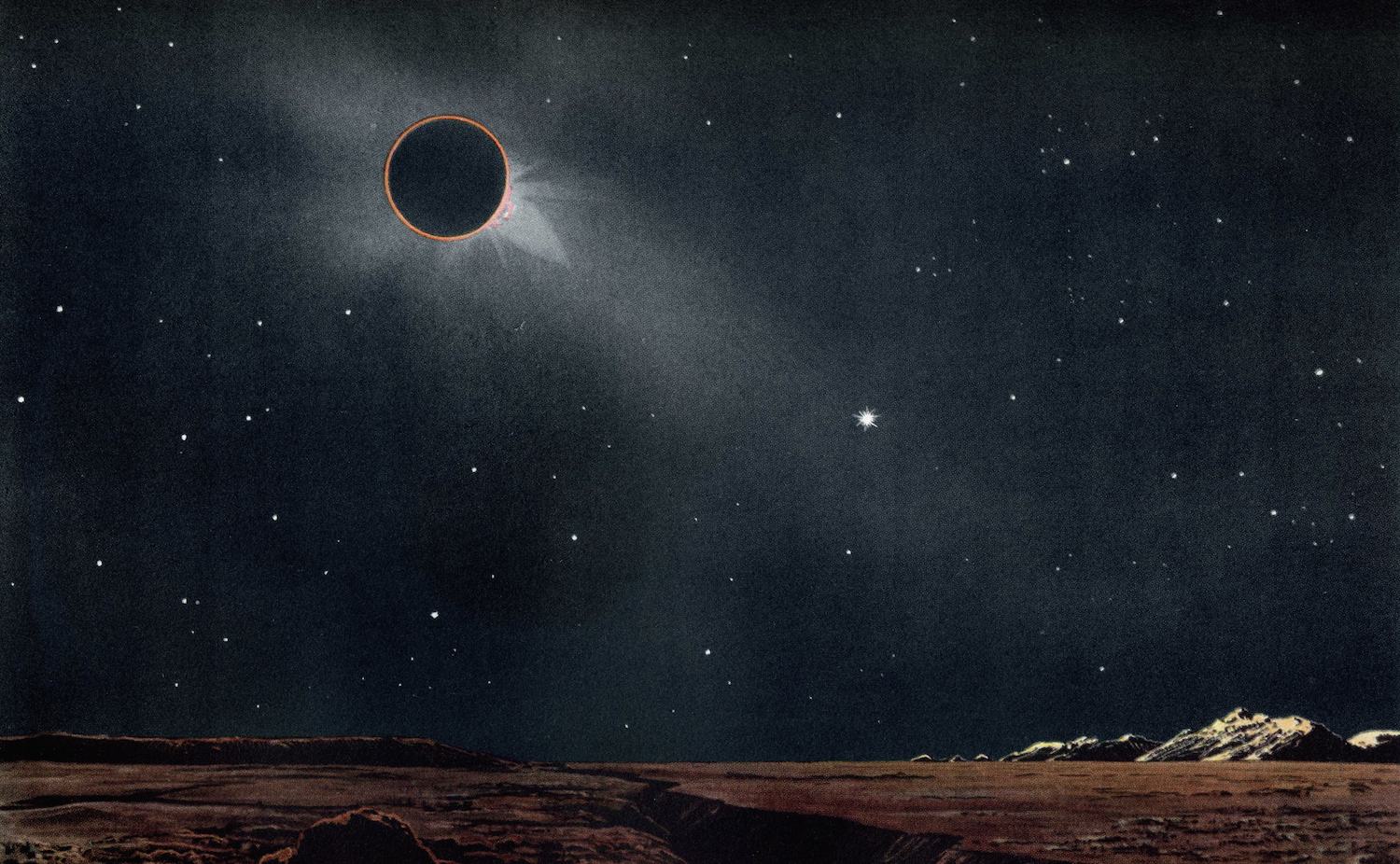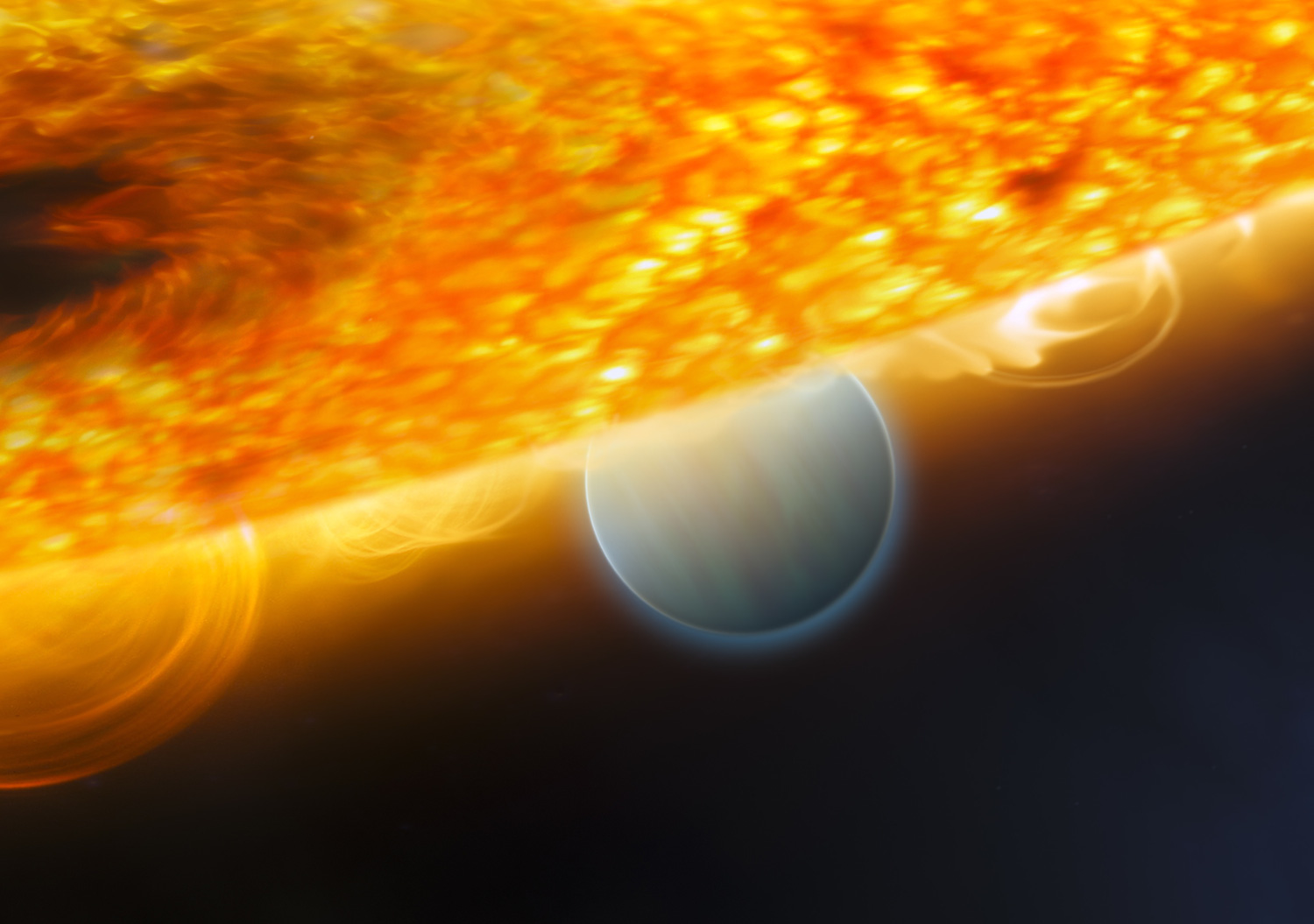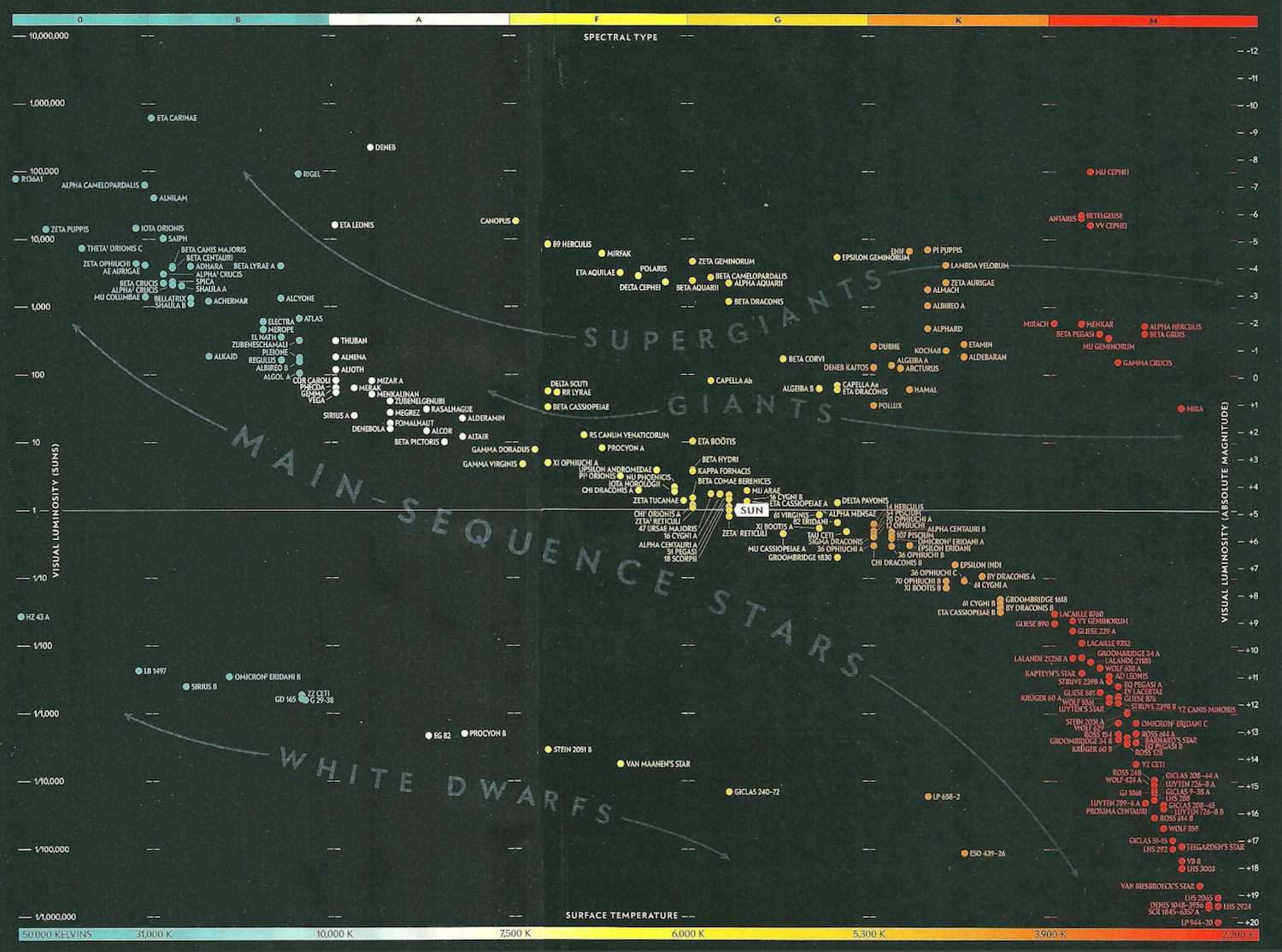@tmospheres
the chemical content, structure,
climate and weather of other worlds.


the only sunlight reaching the Moon has traversed the Earth's atmosphere.
The Moon surface turns the colour of that light, the light of a thousand sunrises and sunsets. This colours our Moon's face giving rise to the blood Moon - a lunar eclipse. From the Moon, one would see the Sun vanish behind the Earth, producing a total eclipse but for a ring of mostly crimson light.
The image above was imagined and drawn in 1937 by Lucien Rudeaux in his book Sur Les Autres Mondes. When one takes a spectrum of that light, it is possible to measure the presence of biologically produced gases such as oxygen, carbon dioxyde, methane and ozone.

and hard to distinguish from the star.
On this photograph, we can just about notice Venus' atmosphere, as a small ring of light; its gets mostly lost into the glare of the Sun. For exoplanets the task is even harder.
Instead of a resolved ring of light, we measure the size of the planet as a function of wavelength. For instance, observing just in blue light, we would notice that a given planet appears bigger, which we interpret as being more opaque and a signature of Rayleigh scattering (the process creating our blue skies). In this fashion, several molecules have been identified in exoplanets' atmospheres, even some clouds.

the planet passes behind the star.
Our telescopes usually collect starlight combined with any reflected and re-emitted planetary light. During occultation, only starlight reaches Earth. Subtracting, we can recover an exoplanet's light and establish its spectrum.
In addition to retrieving chemical abundances, emission spectroscopy permits the reconstruction of the vertical structure of an exo-atmosphere. Eventually this will tell us whether the surface of a telluric planet allows the continuous presence of liquid water.

are like maps to astronomers.
Hertzsprung-Russell diagrams plot the intrinsic luminosity of a star and its effective temperature. Stars form clumps, notably a main sequence from which we learned much about stellar evolution.
From a planet's flux (obtained at occultation) and its distance to Earth, we can compute its
intrinsic luminosity. The

will probably happen within ten to twenty years. Likely, we will be uncovering an astonishing variety of climates that we will need to understand before risking an interpretation about their composition.
While the techniques described earlier should work in practice, many hurdles lie in our path to the empirical verification that other habitable environments exist. Stellar activity may hide the small signals we seek; cloud cover may prevent us from observing deep enough into these exo-atmospheres - to name only two.
However, 20 years ago, when the first exoplanet was discovered no one had imagined we would already be, today, identifying molecules in the
atmosphere of a planet outside the Solar system. With the right targets,
for instance from
Below, you will find papers about the atmospheric characterisation of a few exoplanets.
They are mostly about the characterisation, in emission and transmission, of the planets discovered in the context of my collaboration with